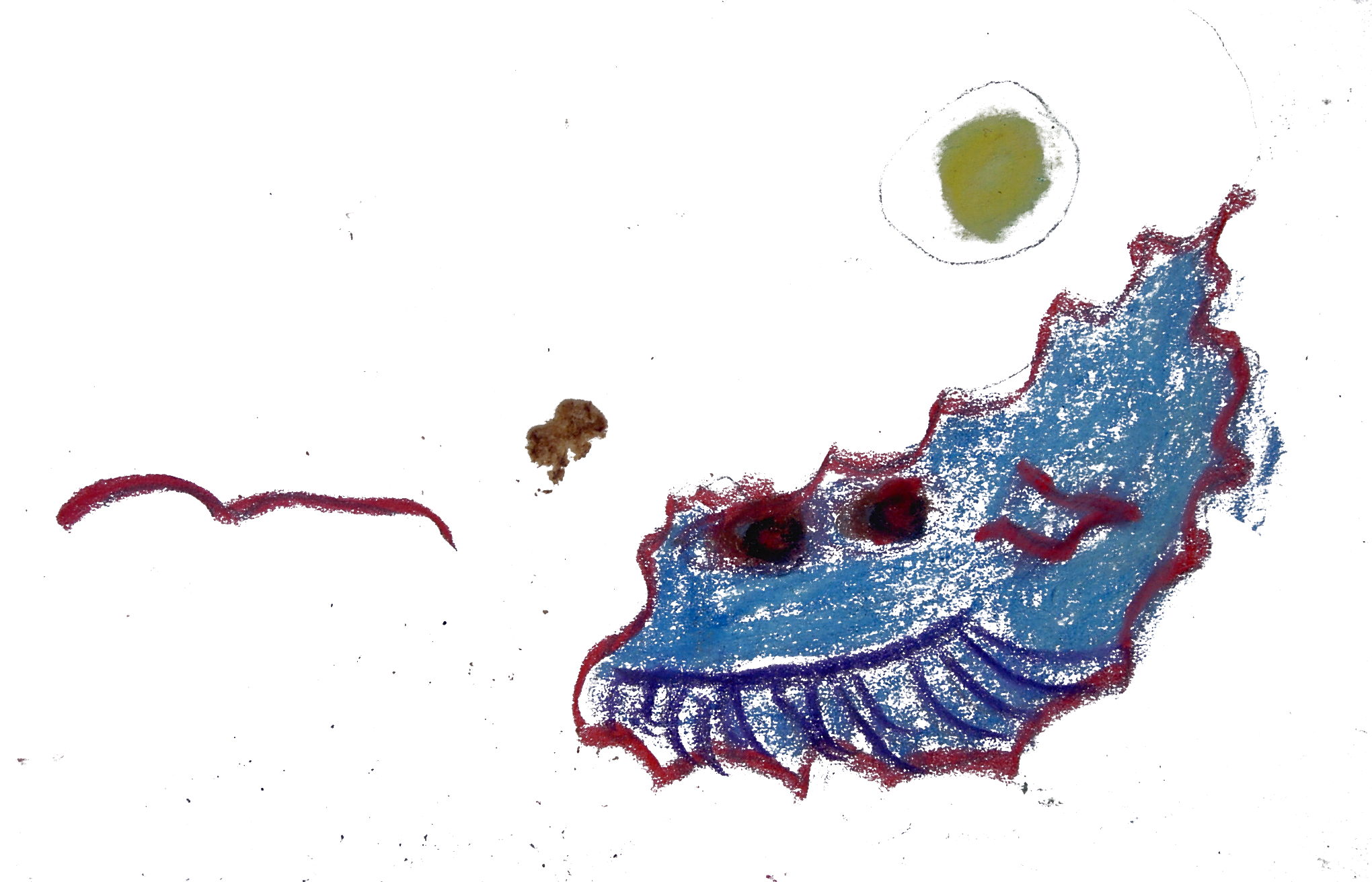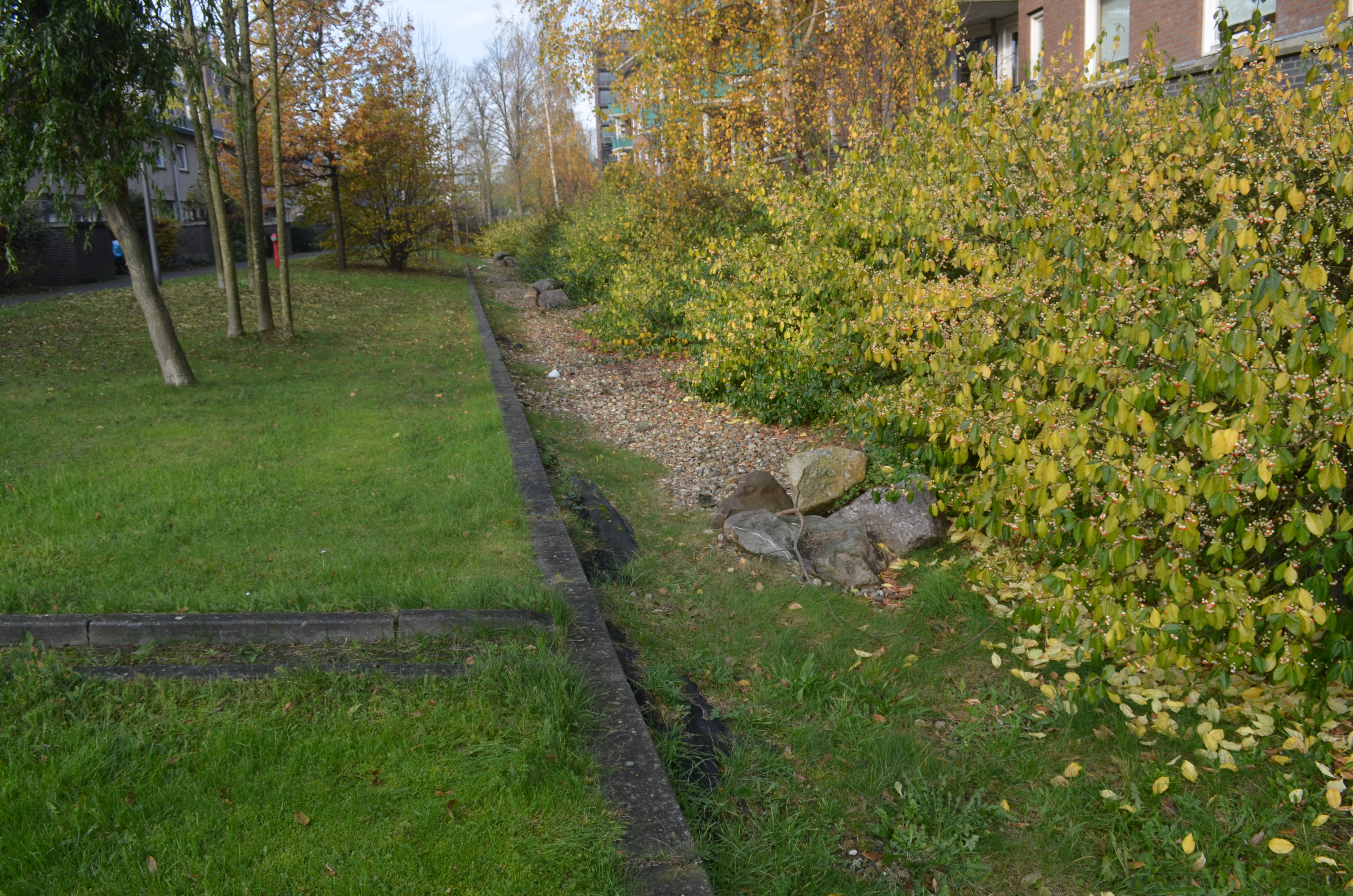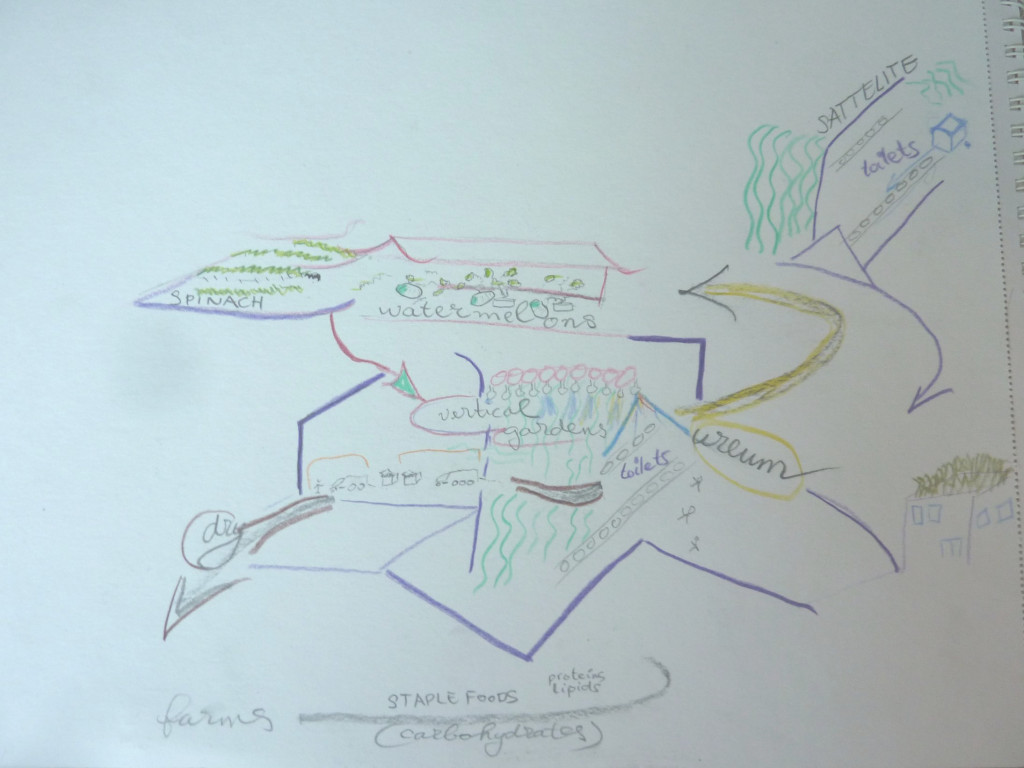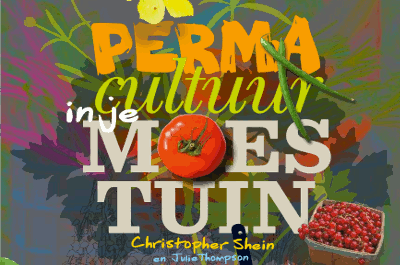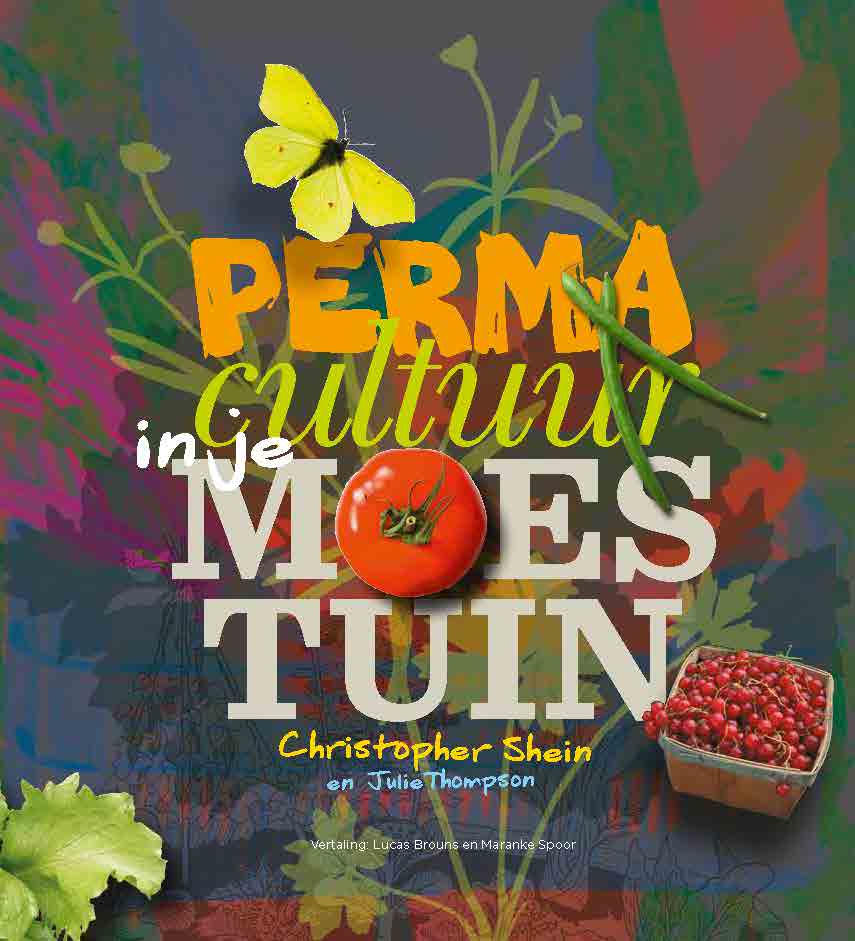Heb je in de nazomer ook af en toe gedacht… En nou kan-ie wel weer met die regen? Een collega-tuinier op onze volkstuin-vereniging merkte op dat het zestig uur achter mekaar door had geregend! Je kent de consequenties in stedelijke omgevingen: de riolen kunnen de hoeveelheden, vooral bij hoosbuien inderdaad, amper aan. Als ze overstromen komt er ongezuiverd rioolwater in het grondwater. In een laaggelegen wijk van Amsterdam is daarom deze wadi aangelegd, die het water tijdelijk kan bufferen.
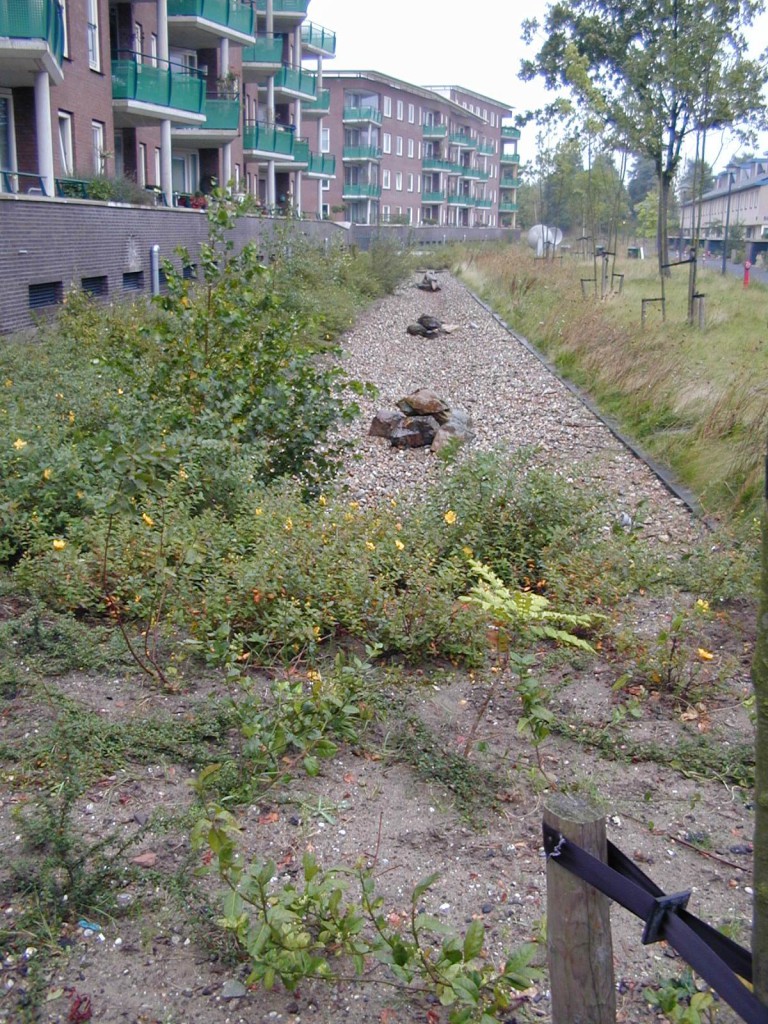
Wadi in Amsterdam Watergraafsmeer, parrallel aan de Middenweg en de Anfieldroad. En hier staat een filmpje: https://Climatescan.nl/projects/7/detail – waarvoor dank, alsook voor de foto’s, aan Waternet. Zie ook Amsterdam Rainproof, met onder meer een project waarin Amsterdammers zich konden aanmelden als ze in hun buurt een ‘postzegelpark’ wilden aanleggen.
Er zijn ook steden waar er geen riool is. Nu er veel mensen naar steden verhuizen, zoals Mumbai en Mexico-stad, vraagt dat om nieuwe oplossingen. In zulke steden komen nieuwe nederzettingen van mensen die zeer dicht op elkaar wonen. Ik werd vorige herfst, in het kader van een uitwisselingsprogramma voor pioniers, gevraagd mee te werken aan een project hieromtrent, bij BioPolus. Nu is BioPolus een bedrijf dat zijn wortels heeft in waterzuivering. Terwijl in onze permacultuur-ontwerp-opleidingen een van de basisvragen bij water is: Wat stop je erin?
Inderdaad geen poep dus, als het niet hoeft. Mijn tijdelijke collega’s (uit Finland en Spanje) vonden het helemaal logisch om toiletten te adviseren waar urine en droge uitwerpselen gescheiden blijven. Het bedrijf dat ons had uitgenodigd, leek echter verder te gaan met de ‘klassieke’ manier om eerst poep in het water te stoppen.
Hiervoor werd als argument een onderzoek aangehaald dat in een Japanse gevangenis is uitgevoerd. Uit dit onderzoek bleek dat als er veel water werd rondgepompt in de leefomgeving van de gevangenen, ze niet met elkaar gingen vechten. Zeker zal kabbelend en bruisend water op veel mensen een geruststellende invloed hebben, en mensen uit bepaalde culturen krijgen er een hygiënisch gevoel van als ze een toilet doorspoelen. Maar er zijn ook mensen die zich proper voelen als ze zaagsel op hun poep gooien in een composttoilet. Informatie uit de ene situatie kun je niet altijd generaliseren om in een andere situatie toe te passen.
Recentelijk werd BioPolus uitgenodigd in Eindhoven om mee te kijken naar de rioolwaterzuivering van deze stad waar er al poep in het water zit.
Wat mij tijdens mijn maand bij BioPolus opviel, is hoeveel informatie er op het internet rondgaat over de nieuwe hyperstedelijke omgevingen (vaak krottenwijken genoemd) die aangeeft dat het efficiënt is om in de stad te wonen en dat mensen zich er gelukkiger voelen. De toepasbaarheid van zulke welvaarts-indexen is echter per situatie heel verschillend. Zo kan de Wereldgezondheidsorganisatie met de beste bedoelingen de strijd aangaan met ‘open defecation’ (zeg maar wildpoepen), maar het risico is dat culturen die ándere slimme oplossingen, of in hun situatie slimmere oplossingen hebben dan een toilet zoals het onze, hierdoor als ‘minder ontwikkeld’ kunnen worden gezien. Of dat de ‘landgrab’ (landjepik) die op grote schaal plaatsvindt van Mongolië tot Indonesië, onbedoeld wordt vergoeilijkt met deze veronderstelling dat in een stad wonen per definitie goed voor je is.
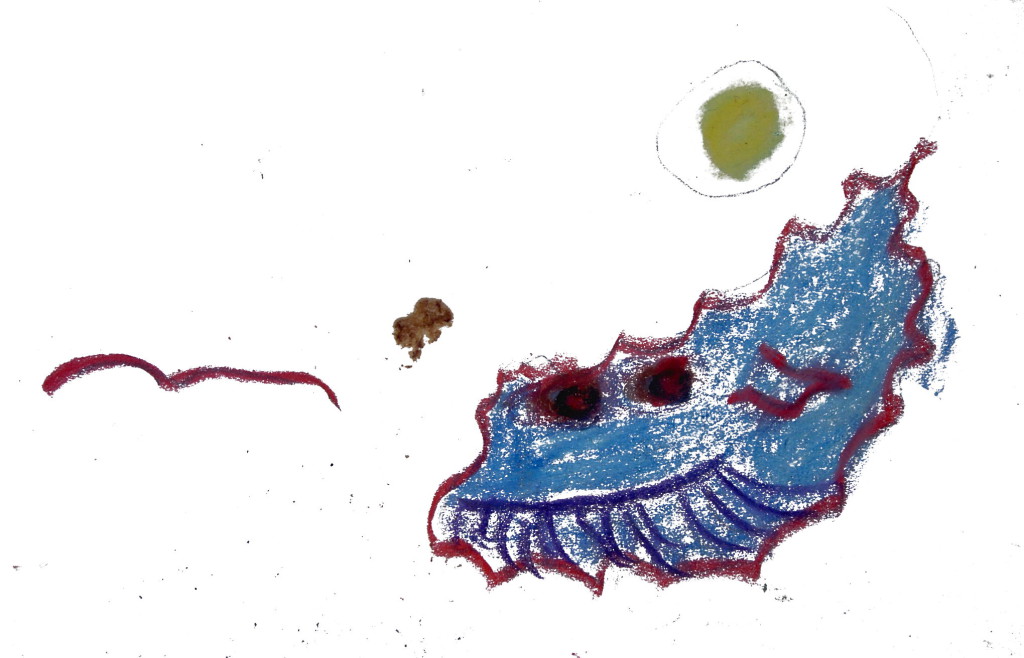
Bovendien wordt er soms dubbel verdiend aan het scheppen van problemen: eerst verdient een fonds aan het kappen van een indianenbos voor grootschalige landbouw, en vervolgens moet die grootschalige landbouw worden ‘geïntensiveerd’ om de indianen, die nu tegen wil en dank in een stad wonen, te ‘voeden’. (Je herinnert je misschien een schokkende uitzending van Nieuwsuur van eind 2013, over Guarani-indianen in Brazilië en de suikerfabrikant Bunge.)
Het ontwerp-systeem permacultuur kunnen we gebruiken om naar het hele plaatje te kijken. En de morele vuistregels Zorg voor de aarde, Zorg voor de mens en Eerlijk delen zijn daarbij de middelen om een evenwicht te vinden.
Alleen naar de stad kijken of alleen naar het platteland leek mij niet wenselijk in dit ontwerp; daarom zie je op de volgende illustratie hoe urine lokaal wordt gebruikt voor in verticale stadslandbouw (waterrijke voeding met veel mineralen), terwijl het droge deel, de faeces, met cargobikes naar grotere composterings-installaties buiten het stedelijke gebied wordt gebracht. Daar zijn namelijk ook de boerderijen waar het koolhydraatrijke basisvoedsel (staple foods) vandaan komt in de vorm van granen, vlees en noten. Zo sluit je een stukje van de kringloop regionaal en een stukje lokaal in de wijk.
In bovenstaande illustratie zie je de gele en de bruine pijlen (ureum respectievelijk dry). De droge mensenmest, gemengd met koolstofrijk materiaal, wordt in karton met cargobikes naar regionale composterings-installaties vervoerd op weg naar de boerderijen.
Het onderzoeksverslag van ons tijdelijke team in het Watermall-project bij BioPolus zijn hier grotendeels te zien – een van de voorwaarden van het Climate-KIC-project was dat de restultaten beschikbaar zijn voor iedereen.
